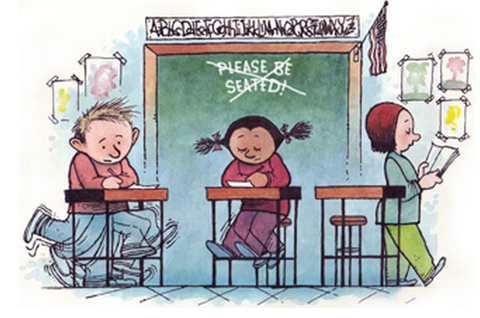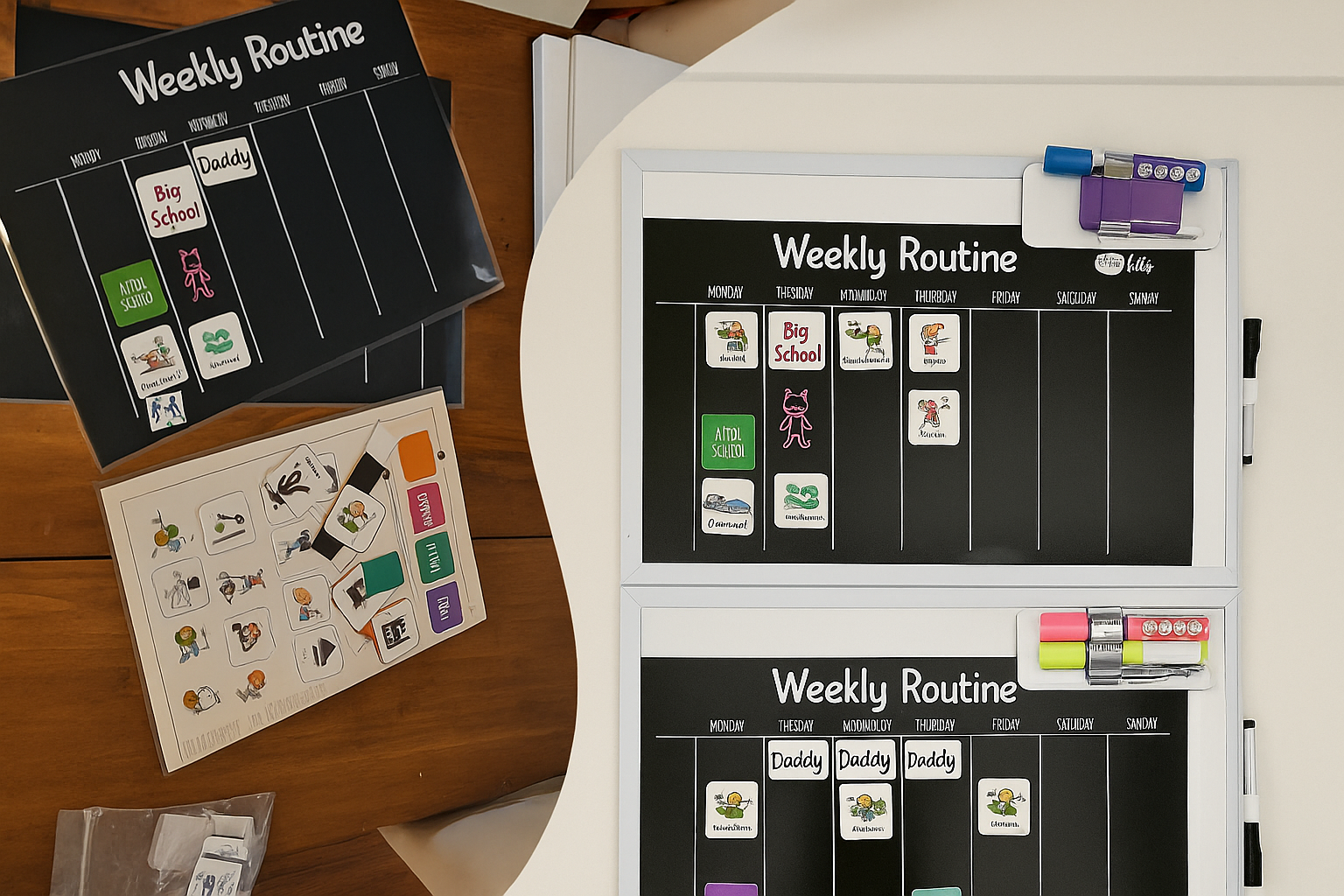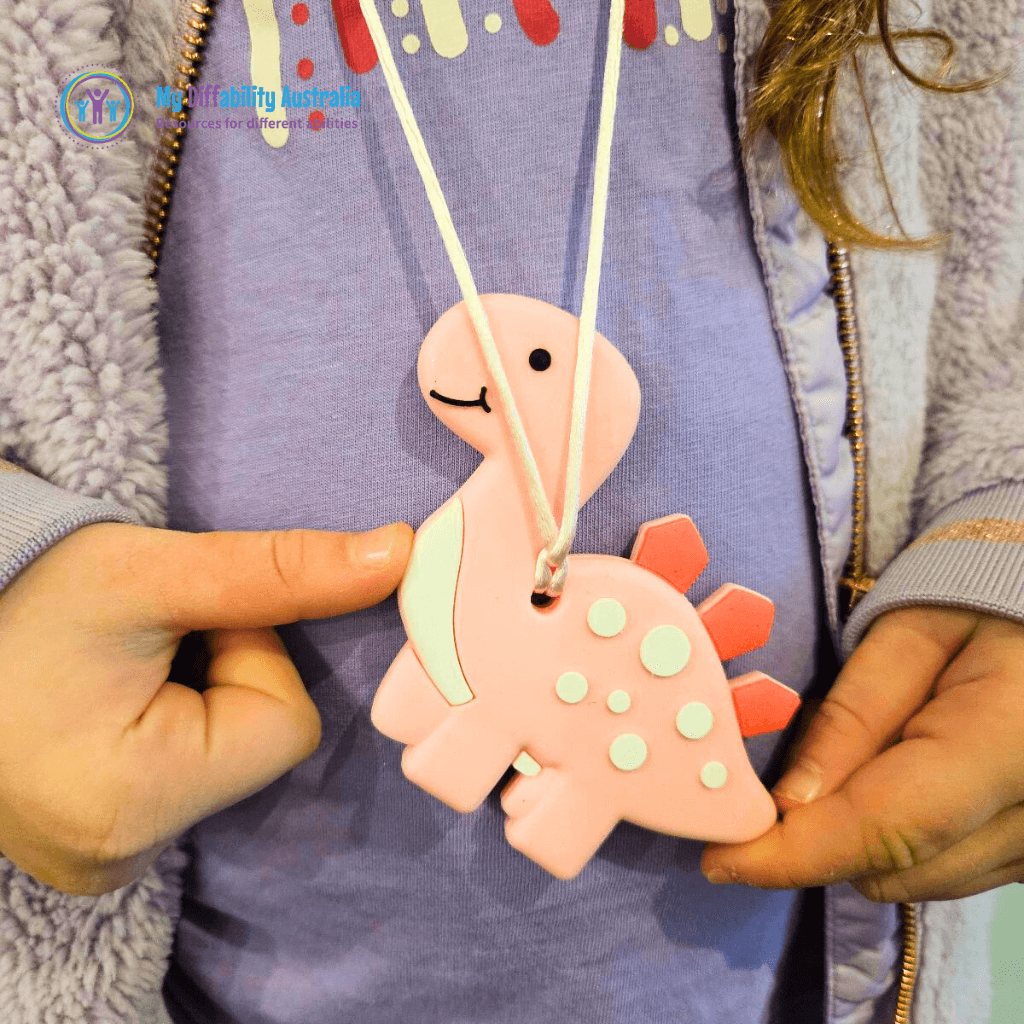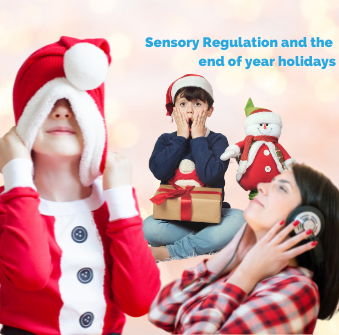
The first week back of the new school term or year is often a time of heightened energy levels and excitement, but also trepidation for lots of children.
Typically we see children settling in reasonably well during the first week, trying their best to sit still and listen to their new teacher and following all (or most) instructions without difficulty. However, after one or two weeks at school some more complex difficulties begin to appear for some students. Often these difficulties can resemble what many people would consider to be ‘ADHD symptoms’.
Some students will begin to fidget with anything they can find on the floor or ground outside, such as pieces of blue tac or tanbark, especially when sitting on the floor during mat time. Others will chew on pens, pencils, clothes, hat cords, water bottles and just about anything they can get their mouths on! The result is parents and teachers needing to constantly replace these common classroom items.
Suddenly it appears almost impossible to sit still and listen to the teacher without moving around or leaning up against tables or friends. Soon the noise-making and humming starts too.
Here is the GOOD NEWS – these types of ‘seeking’ behaviours are actually communication and serve an important purpose. Our children / students are showing us that they are trying their best to concentrate, participate and learn, but they need a little extra sensory input to help regulate themselves in order to participate, listen and learn. In fact, this type of behaviour can actually be viewed as a positive sign that these students are doing what they can to attend and concentrate in the classroom.
Rather than trying to stop these behaviours, a more effective and positive approach for all involved is to consider how we can provide kids with the input they need to help regulate themselves in the classroom. Ideally, this should be done in a way that limits distractions and does not have a negative impact on their social relationships.
The fantastic Move n Sit wedge is one of the most popular resources we provide for students who need to move around when seated on the floor or at the table. They are able to use it to seek out the movement that they need, which enhances attention and concentration without needing to get up and run around the classroom (well, hopefully anyway).
One of our other favourite simple strategies is to use a piece of theraband tied around the front two legs of a school chair so the student can kick, bounce and move against the resistance of the band, providing alternative activity to reduce rocking on chairs or getting up and walking around every few minutes.
The improvement in concentration and work output when students who like to chew are provided with oral-motor tools such as pencil toppers can also be quite amazing. They can receive that deep pressure input they so often seek out without having to put things they find on the ground in their mouths, or chewing on their uniforms.
Fidgets are fantastic when used correctly (we suggest putting some clear rules and expectations in place for the child) for children who need to fidget to maintain concentration. We also love the idea of setting up a fidget box that the whole class can access, as many students will benefit from fidgeting at times. It can also really help certain kids who may be a bit sensitive to appearing 'different'.
It's considered appropriate for adults to chew on pens, bend and play with paperclips, have a cup of coffee, or sit on spinning wheelie chairs to maintain our concentration without others considering these behaviours to be 'ADHD symptoms'. So why would we try to stop children from doing what they need to do to participate in class?
The main point we would like to reinforce here is that it’s not that your child or student WON’T sit still and listen, but rather, it’s often that they CAN’T.......yet. Or maybe it's that they need to move in order to self-regulate, participate and engage.
We are here to provide appropriate ideas and resources for children who need to move and fidget in the classroom in a more structured and less disruptive way. Please feel free to contact us for complimentary advice from an experienced Occupational Therapist.
Happy teaching and learning everyone.





Leave a comment (all fields required)